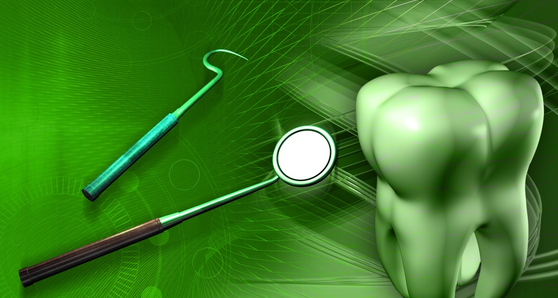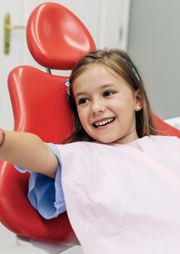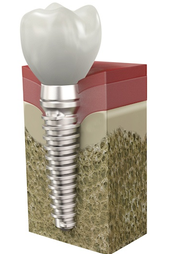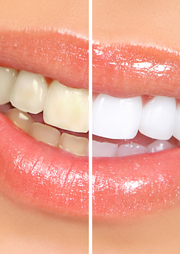Diseases caused by such situations are called cross infections and they can be caused by either interhuman contact or contact with the equipment used during dental treatment.
Undoubtedly, the most dangerous microorganisms in a dental practice are the HIV and epathisis viruses. However, the potential for infection from other bacteria and microorganisms should not be underestimated.
The main purpose of sterilisation is to ensure the safety of both the patients and the practitioners during usage of equipment and materials.
In order to achieve this objective, it is paramount to implement a disinfection and sterilisation programme targeting all the potential carriers of microorganisms, such as the tools and surfaces of the dental unit. Moreover, the safety of the patients and staff must be ensured by using protective barriers, such as disposable gloves, masks, glasses, screens, sterile sheets, and shoe covers...
In our practice, we devote time and specific methodologies to sterilisation. Our operators know the operating procedures perfectly well and are aware of the fact that the time required for each step cannot be shortened.
While the equipment is being prepared for sterilisation, the operators may come into contact with potentially infected biological material. Therefore, as provided for by the regulations for the protection of the operators, it is indispensable to wear goggles, gloves and protective masks.
(The reference legislation in Italy is “Guidelines on sterilisation as collective protection from biological agents in healthcare facilities”, Legislative Decree 81/2008 and subsequent amendments and supplements).
After each dental treatment, the assistant removes the tray containing the materials and equipment used and takes it to the sterilisation room. The first step consists in the disposal of single-use equipment and of sharp tools, which are placed into dedicated containers.
The remaining equipment is sterilised according to the following procedure:
- Decontamination, i.e. the set of procedures aimed at reducing the microbial load and removing any organic matter to enable appropriate disinfection and sterilisation.
- Disinfection, e. the set of procedures aimed at eliminating pathogenic microorganisms, except spores.
- Sterilisation, i.e. the elimination of all microorganisms, including spores.
In Italy, decontamination is mandatory, pursuant to Ministerial Decree 81/2008 on the protection of workers. The purpose of this phase is to decrease the bacterial load and restore the biological safety of the equipment used. Decontamination can occur through chemical or physical processes and in our practices we use both. First, the tools are placed into a container filled with a decontaminating solution (chemical decontamination) and then moved to a washer-disinfector (physical decontamination).
After this, the tools are placed into a container for ultrasound disinfection, filled with a specific disinfecting solution that reduces microbial contamination by over 90% and removes any residual organic material.
Once this process is completed, the tools are rinsed thoroughly and then dried.
After the tools are disinfected and dried, they must be properly bagged for autoclave sterilisation.
Sealing the tools inside sterile pouches ensures that, after sterilisation, they will remain sterile and be protected from air contamination until usage.
Paper or polypropylene pouches are ideal for steam sterilisation of small sets of surgical tools or for individual tools.
The dates of sterilisation and expiration are printed onto the pouch next to the sealing tape. Tools sealed in individual pouches remain sterile for 30 days, while those sealed in double pouches remain sterile for 60 days if kept inside closed cabinets. Once this period has expired, the sterilisation process must be repeated using a new pouch.
The reference regulations are EN 868-1 and EN 556 on devices designated "STERILE"
Labelling of the pouches ensures that the sealing and expiration dates are clearly indicated.
Currently, the autoclave is without a doubt the most effective tool for the sterilisation of all dental equipment. This device uses saturated steam under pressure (all the air is removed from inside the device) and it can sterilise metal tools, glass, and fabric.
Modern autoclaves are equipped with self-diagnosis systems monitoring all sterilisation parameters. They also print a sterilisation report which must be checked for each cycle and archived for at least 10 years.
We perform chemical and biological checks on a daily basis, in order to verify that each sterilisation cycle has been performed correctly and that the autoclave has successfully eliminated all microorganisms.
As for the environment in which we operate, i.e. the rooms of our practices, our assistants use a spray to disinfect the chairs, suction systems, and all surfaces which might potentially be contaminated. The pipes of our dental units contain Calbenium, an active product that sanitises the water and, thanks to its formulation, is also effective in eliminating limescale, algae and biofilm accumulating inside the pipes. The chair is then made ready for the next patient and all disposable equipment needed is laid out, along with sterilised tools in their pouches.
The premises of our practice are periodically disinfected through the atomisation of a disinfecting solution in all the areas in order to drastically reduce the presence of bacteria.









